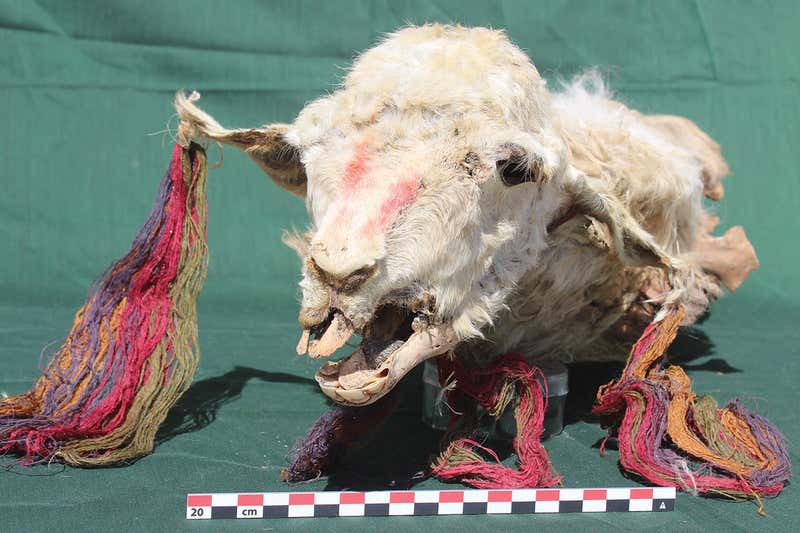Incas buried decorated llamas alive ‘to assuage conquered locals’, study suggests

The Incas may have decorated llamas with jewellery and buried them alive in a bid to appease native populations they had recently conquered, new discoveries suggest.
The ancient civilisation – which arose from the Peruvian highlands in the 13th Century to dominate western South America – is well-known for its use of sacrifice to please the gods, ensure bumper harvests and victory in battle.
And in terms of sacrificial value, llamas are believed to have been second only to humans, with the accounts of Spanish conquistadors detailing the slaughter of hundreds of the camelids at a time, cutting their throats to appease deities and ancestors.
But the discovery of five naturally mummified and heavily decorated llamas at the administrative centre of Tambo Viejo has indicated they may have had other, less typical uses – and may have been buried alive.
Radiocarbon dating found the “exceptionally well-preserved” llamas, decorated with valuable string and bracelets, were buried between 1432 and 1459.
This was around the time the Incas annexed the Tambo Viejo region, and researchers believe the sacrifices may have been used as a way of ensuring social order and cohesion. The graves appeared to have been marked with tropical feathers, possibly in a bid to assert their new authority.
Further digging revealed evidence of a large party, with researchers finding the remains of a large oven and other traces of feasting and festivity.
“The offerings likely were part of much larger feasts and gatherings, sponsored by the state,” said the University of Calgary’s Dr Lidio Valdez, who found the llamas with archaeologists from the San Cristobal of Huamanga University.
“The state befriended the local people with food and drink, cementing political alliances, whilst placing offerings allowed the Inca to claim the land as theirs.”
In their study, published in the journal Antiquity, the archaeologists wrote: “The Inca believed that it was not possible to take something without giving something back; this implied that the annexation of peoples and their lands required an exchange to normalise the otherwise abnormal situation.”
They added: “It is through these measures that the Inka state established and extended its control by manipulating landscapes, animals, sacred places (huacas) and, ultimately, the inhabitants.

“Through these ceremonies, the Inca created new orders, new understandings and meanings that helped to legitimise and justify their actions to both the conquerors and the conquered.”
Llamas were key to the Inca economy and religion, and were while used as beasts of burden, were also thought to be sacred, according to the researchers.
Previous archaeological work has suggested that brown llamas were sacrificed to the creator god (Viracocha), white llamas to the Sun, and multicoloured llamas to thunder – a theory supported by the new findings at Tambo Viejo.
These are believed to have happened at key times in in the year, with 100 llamas killed in October to promote rain, 100 in February to stop it, and 100 in March for the mountains and dead ancestors.
One hundred is believed to have been the preferred number for sacrifices, but some periods of extreme stress, such as drought, sickness and war, would have required the slaughter of thousands as part of Capacocha ceremonies.
However, while the accounts of the conquistadors suggest llamas used in mass sacrifices typically had their throats cut, the finding of the extravagantly decorated Tambo Viejo llamas indicates that those used as offerings to individual deities may have been killed in a more brutal fashion – which according to the conquistadors was sometimes used for sacrificing children.
“I have no way to prove it, but I think they were buried alive,” Dr Valdez told The New Scientist.
The evidence appears to support this theory – the five llamas had no injuries, but their legs were securely tied together with rope, which Dr Valdez believes was to keep them under control as they were buried.
“Incas used to sacrifice children, and it is said some of the children were buried alive," Dr Valdez told the magazine. “If they did that with children, I’m sure they would have done the same thing with llamas.”
Read more
Llamas offer hope in the fight against coronavirus
Ruins show 'lost city' of the Incas was part of vast complex

